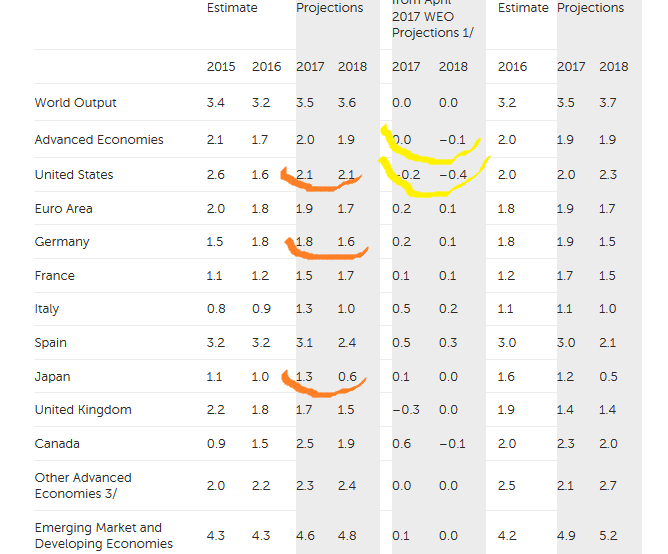Oggi diamo seguito ad un primo Post, di alcuni giorni fa, all'interno del quale Recce'd aveva messo a disposizione dei lettori un video risalente al 2007: ci sembra doveroso, per un gestore di portafoglio responsabile, mettere in evidenza alcune somiglianze, significative, tra il 2007 ed oggi.
Abbiamo ritrovato ieri, nel Blog di John Cochrane, un testo che è in piena sintonia: ne riproponiamo qui sotto un estratto, che a noi risulta di grande significato: si tratta di un commento ad alcune dichiarazioni di Janet Yellen a Jackson Hole. Il testo è in inglese per rispettare il significato autentico.
The most important question, really: Is the system in fact safer, more "resilient," ready to deal with the next crisis, especially if that crisis comes from a new source -- say pensions, student debt, or worst of all, a global sovereign debt crisis?
Ms. Yellen asserts, that yes:
"reforms have boosted the resilience of the financial system. Banks are safer. The risk of runs owing to maturity transformation is reduced. Efforts to enhance the resolvability of systemic firms have promoted market discipline and reduced the problem of too-big-to-fail. And a system is in place to more effectively monitor and address risks that arise outside the regulatory perimeter."
Really? How and why?
"Loss-absorbing capacity among the largest banks is significantly higher, with Tier 1 common equity capital more than doubling from early 2009 to now. The annual stress-testing exercises in recent years have led to improvements in the capital positions and risk-management processes among participating banks. Large banks have cut their reliance on short-term wholesale funding essentially in half and hold significantly more high-quality, liquid assets."
."..Economic research provides further support for the notion that reforms have made the system safer. Studies have demonstrated that higher levels of bank capital mitigate the risk and adverse effects of financial crises. Moreover, researchers have highlighted how liquidity regulation supports financial stability by complementing capital regulation."
Yes! Capital, capital, capital, and the more the merrier. But we don't need ten thousand pages of regulations, nor annual stress tests to just demand more capital. Moreover, just how much capital, and how measured? That alone could have made a good, and quite long, speech.
The rest is less encouraging:
Assets under management at prime institutional money market funds that proved susceptible to runs in the crisis have decreased substantially.
That assets under management have decreased is not a good sign. Money market funds are easy to fix -- float NAV, change to ETF structure, or add equity cushions. Capital and fixing run-prone liability structures substitutes for intrusive asset regulation, a point that seems to be missed entirely.
"Credit default swaps for the large banks also suggest that market participants assign a low probability to the distress of a large U.S. banking firm."
CDS tell us about the probability of an imminent crisis, not about the resilience of banks if one should come.
As the Wall Street Journal notes compactly in response to Ms. Yellen's overall claim of safety
"Banks are safer, but they should be after eight years of modest expansion. The real test of financial stability comes in times of economic stress, when interest rates rise or investors get nervous and rush to safer assets."
Ms. Yellen recognizes the narrow point,
"To be sure, market-based measures may not reflect true risks--they certainly did not in the mid-2000s--and hence the observed improvements should not be overemphasized."
But not, I think, the larger point. All the banks looked perfectly safe to everyone who was looking in 2006, including the Fed. Yes,
"supervisory metrics are not perfect, either."
The big banks passed their regulatory standards through the crisis. So did Lehman Brothers. Ms. Yellen concludes only that
"policymakers and investors should continue to monitor a range of supervisory and market-based indicators of financial system resilience."
Pay attention to a lot of signals none of which indicated the last crisis? And then do what? As the WSJ put it,
"You have to ignore history to believe that regulators are suddenly so wise that they know the current regulatory regime will prevent the next crisis. ... Fed officials Ben Bernanke and Tim Geithner [sic, Treasury Secretary] then underestimated the financial risks in early 2008 when the stresses were already apparent."
Ms. Yellen herself, in another context, recognizes the fact
And yet the discussion here at Jackson Hole in August 2007, with a few notable exceptions, was fairly optimistic about the possible economic fallout from the stresses apparent in the financial system.
In a nutshell, just how much better is Ms. Yellen's feeling that the banking system is safe than was Mr. Bernanke's in 2007, and on what basis? More deeply, what justifies her faith, reflecting that in all the regulatory community, that this time, "policymakers" by monitoring "a range of supervisory and market-based indicators of financial system resilience" will see the crisis coming, and do something about it? Shouldn't the screaming lesson of the last crisis be, that we need a resilient system, not clairvoyant "policymakers" (I hate that word) "monitoring" and by implication guiding, the system?






